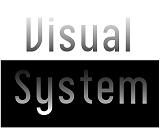by admin | Jan 23, 2022 | Uncategorized
As a tenant, you have the right to a tenancy agreement – a legal document that sets out the terms and conditions of your tenancy. But what happens when you want to create your own tenancy agreement? Can you do it, and is it legal? In this article, we`ll explore the ins and outs of making your own tenancy agreement, and whether it`s a good idea.
First things first – it is legal to create your own tenancy agreement. However, it`s important to note that a tenancy agreement is a legal document, and as such, it needs to meet certain requirements to be valid. This means that while you can create your own agreement, it`s recommended that you seek legal advice to ensure that it`s legally binding and protects your rights as a tenant.
If you do decide to create your own tenancy agreement, you`ll need to ensure that it includes all the necessary information. This includes details about the property, such as its address and the names of the landlord and tenant(s), the length of the tenancy, the amount of rent to be paid, and any additional fees that may be required, such as a security deposit.
It`s also important to note that certain terms in a tenancy agreement cannot be altered or removed, even if the landlord and tenant agree to it. For example, a tenant cannot agree to waive their right to a habitable dwelling or their right to a notice period before being evicted.
So, while you can create your own tenancy agreement, it`s important to ensure that it meets legal requirements and protects your rights as a tenant. Seeking legal advice can help ensure that your agreement is legally binding and helps to mitigate any potential disputes between you and your landlord.
In conclusion, making your own tenancy agreement is possible, but it`s important to ensure that it meets legal requirements and protects your rights as a tenant. Seeking legal advice and carefully considering all the necessary details can help create a legally binding and fair agreement that benefits both the landlord and tenant.
by admin | Jan 8, 2022 | Uncategorized
AIA Architect Agreements: Understanding the Importance of Legal Protection
Every architect knows how critical it is to have a clear understanding of the project they are working on, its scope, timeline, and expected outcomes. However, a crucial aspect often overlooked is the legal protection afforded by having a thorough and transparent architectural agreement.
The American Institute of Architects (AIA) has developed a series of agreements that provide a standardized framework for the relationship between architects, clients, and contractors. These documents are designed to protect all parties involved and ensure that all aspects of the project are clearly defined and agreed upon.
The AIA agreements cover a range of scenarios, from design-build agreements to construction management contracts, and each includes specific language that addresses critical issues such as project scope, timelines, fees, and compensation. Most importantly, these agreements ensure that all parties understand the roles and responsibilities of each participant in the project.
One of the primary benefits of using an AIA agreement is that it can help prevent disputes and misunderstandings that may arise during the course of a project. Disagreements over project scope, fees, or timelines can be costly and time-consuming to resolve, and may even result in legal action. By using an AIA agreement, potential issues are resolved at the outset and outlined in clear terms, so both parties have a shared understanding of expectations and outcomes.
Furthermore, the use of AIA agreements provides a level of protection that benefits both the architect and the client. For architects, these agreements help ensure timely payment and can provide a means of legal recourse in the event of non-payment or breach of contract. For clients, AIA agreements provide assurances that the project will be completed within an agreed-upon timeline and budget, with clear deliverables and milestones.
In today`s digital age, an additional aspect of AIA agreements is their ability to incorporate SEO strategies. By including relevant keywords and phrases in the agreement`s text, architects can boost their visibility in online searches and attract new clients who are searching for design services. SEO optimization is a crucial tool for architects in today`s competitive market, and AIA agreements provide an excellent opportunity to leverage these strategies.
In conclusion, AIA architect agreements are an essential tool for protecting both architects and clients. By providing a standardized framework for project relationships, these agreements help prevent disputes, establish clear expectations, and ensure timely payment and completion. Incorporating SEO optimization into these documents can also benefit architects by boosting their online visibility and attracting new clients. As such, any architect serious about their practice should consider the value of utilizing AIA agreements within their business.
